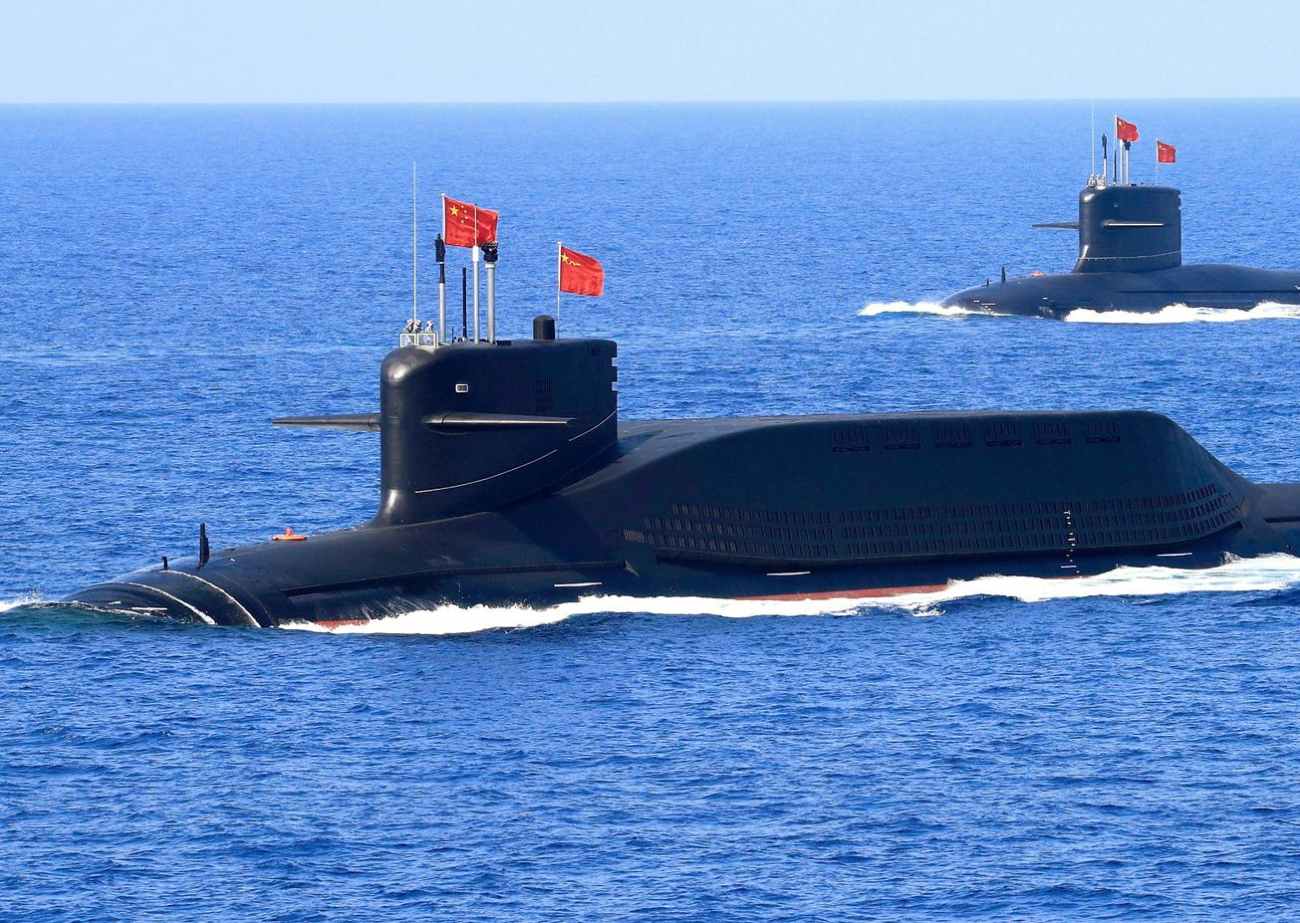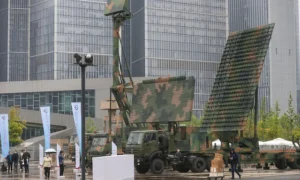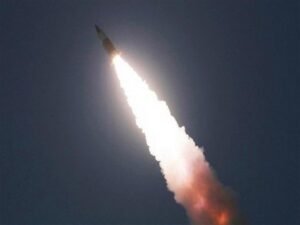The US hopes that Chinese submarines sold to Bangladesh and Thailand will give a window into Beijing’s submarine prowess, which remains a well-guarded secret.
A US Naval War College report indicated that growing closeness with Russia would help China achieve sophistication in submarine manufacturing much earlier than expected.
Technical details of submarine production are classified in all submarine operating countries. But in China, “a culture of extreme secrecy” extends to even far less critical issues.
“The lack of public budgets, opaque and monopolistic procurement processes, and a secret build schedule, PRC procurement is shrouded in a greater degree of obscurity than most other countries,” the China Maritime Studies Institute’s latest report read.
The report noted that sometimes the analyst discovers the existence of a new submarine type only after its construction is already complete, either through satellite imagery or accidentally filmed footage. The lack of transparency makes assessing Chinese undersea warfare systems’ capability difficult.
“Beijing is therefore trying to balance contradictory aims: preserving technical secrets of submarine production while advertising breakthrough successes to signal military prowess, all the while routinely using disinformation about progress in advanced arms programs as a tool in information warfare,” Dr. Sarah Kirchberger, a professor at Kiel University and former naval analyst with German shipbuilder TKMS, said in the report.
Apart from gleaning information about China’s ship-building capability and anti-submarine warfare technology programs through recruitment advertisements of the company, the analyst says that China’s submarine export customers can give more valuable information about Chinese undersea platforms.
“…information from foreign subsystem suppliers to China and experiences reported by China’s submarine export customers in Thailand, Pakistan, or Bangladesh can yield interesting first-hand accounts of the actual vs. the advertised capabilities of Chinese undersea warfare systems,” Dr. Kirchberger opines.
In 2022, the Chinese, unable to manufacture a marine diesel engine for Song-class and Yuan-class submarines, ran its submarine deal aground with Thailand. The Chinese submarines rely on an imported, license-produced marine diesel from the German engine maker MTU, whose 396 SE84 diesel seems to power all the Song-class and Yuan-class submarines that China currently operates.
In 2017, China won a contract to supply one S26T Yuan-class submarine to Thailand in 2023. The deal fell apart in 2022 once it became clear that the German government would not grant an export license for the MTU engine.
After Thailand threatened to cancel the contract, China offered its indigenous CHD620 diesel engine. But Thailand, as of April 2023, was “still hesitant” to accept this “unproven” engine technology, implying it has never been integrated into a submarine.
This situation points to a somewhat “puzzling bottleneck,” says a German submarine design expert interviewed for the report. The German expert considers the engine a “relatively old” technology that is “not too complicated to master” and poses a “manageable” technical risk.
Asked to speculate what elements of an unproven diesel engine might specifically be considered risky from the point of view of a submarine customer, the expert offered that the worries might be related to the exhaust back pressure system for discharging diesel exhaust below the surface when operating at snorkeling depth.
“As the maker of the MTU diesel engine explains, to discharge exhaust below the surface, for every meter of water depth, an additional 100mbar of exhaust pressure must be provided to avoid water entering the engine, for which MTU has developed a ‘special charge air system.’ Malfunctions or bad performance in this area would pose a safety hazard for the crew, and reliability is therefore a key concern,” the expert added.
In addition, China has also supplied a submarine to Myanmar and is courting other countries to sell its undersea platform.
Achilles Heel Of Chinese Submarines
China has three submarine shipyards: Bohai Shipyard, Huludao; Wuchang Shipyard, Wuhan; and Jiangnan Shipyard, Shanghai. China’s submarine industrial base continues to suffer from surprising weaknesses in propulsion (from marine diesel to fuel cells) and submarine quieting.

“Closer ties with Russia could provide opportunities for China to overcome these enduring technological limitations by exploiting political and economic levers to gain access to Russia’s remaining undersea technology secrets,” the report notes.
China seems ahead of Russia in some areas of submarine-building — such as conventional AIP propulsion, especially in EDTs that require a lot of funding. But it lags in others, particularly in “quieting and nuclear propulsion.”
Experts forewarn that the isolation of Russia post-Ukraine war can lead to potential synergies between these two submarine-producing countries. Driven by a lack of funding, Russia’s design bureaus and industries could soon face a brain drain towards China.
“… but the Russian state might decide to halt this trend by entering into mutually profitable synergies, e.g., related to joint production, where Russia would supply essential knowhow on submarine acoustic signature quieting, nuclear propulsion design, and hydrodynamic hull design, while China’s giant and recently modernized shipyards might supply the industrial capacity to build a lot of hulls very fast, fully exploiting economy of scale effects,” said the report.
A Chinese news article reported that on July 5, 2023, the Commander-in-chief of the Russian Navy, Admiral Nikolai Yevmenov, visited a naval shipyard in Shanghai. The article speculated that this might indicate Russian interest in ordering hulls from China’s yards to replenish its strained naval forces, thereby overcoming Russian shipyards’ lack of production capacity and leveraging economy of scale effects, which would be possible if an existing Chinese ship design is chosen.
One further area of Russian-Chinese cooperation with potential repercussions for submarine-building concerns nuclear fuel deliveries. On December 12, 2022, the Russian state-owned Rosatom Corp. supplied 6,477kg of highly-enriched uranium (HEU) to China’s fast-breeder reactor CFR-600 on Changbiao Island.
“The weapons-grade plutonium it will soon produce could be used for warheads, but alternatively, commentators from the submarine research community have discussed the possibility that it could also be intended as fuel for future nuclear-powered submarines,” the report adds.
“Time will tell how far the Russian-Chinese “friendship without limits” can go in the susceptible area of submarine production, but it is safe to assume China would be highly interested in catching up with Russia’s remaining technological advantages and willing to use its political and economic levers to obtain Russia’s submarine technology secrets,” Dr. Kirchberger concludes.
- Ritu Sharma has been a journalist for over a decade, writing on defense, foreign affairs, and nuclear technology.
- She can be reached at ritu.sharma (at) mail.com
Source link







